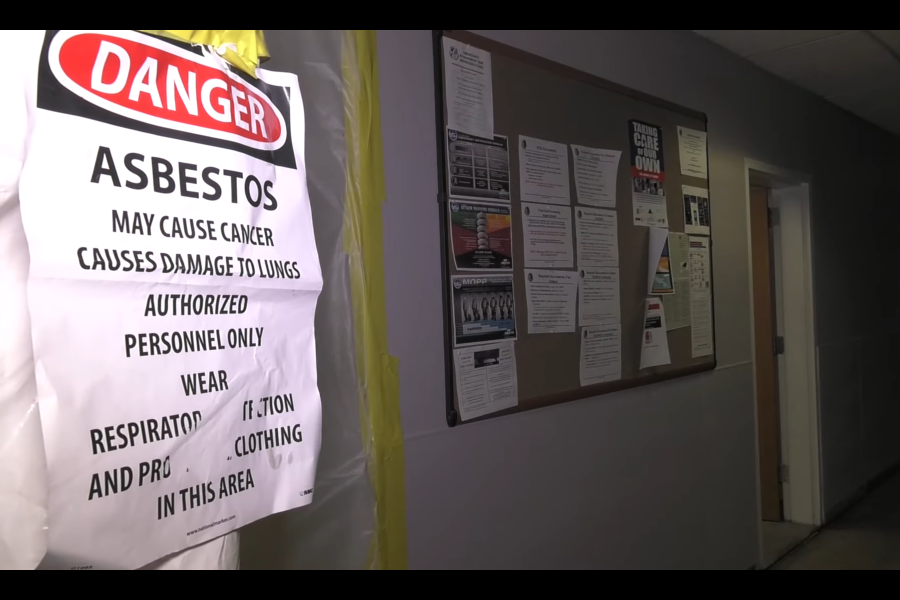Offutt Air Force Base, Neb., continues to move forward with its effort to rebuild following last year’s historic flood, despite the coronavirus pandemic, growing costs, and hazardous work conditions.
Rapidly melted snow and more than six inches of rain breached river levees near the base in March 2019, displacing more than 3,200 personnel. Water submerged about one-third of the base and nearly one-quarter of the 12,000-foot runway. The flood affected 1.2 million square feet of workspace and 118,000 square feet of Sensitive Compartmented Information Facility space used to discuss classified intelligence.
Last year, the Air Force said it needed $420 million for operations, maintenance, and construction, plus $234 million for training devices at Offutt. In February, the service cheered that Congress had provided $5.3 billion in disaster relief funds to cover the full cost of rebuilding its storm-battered bases, including Tyndall Air Force, Fla., in fiscal 2019 and 2020.
But Lt. Col. Chris J. Conover, director of Offutt’s rebuilding management office, told Air Force Magazine the initial price tag was off and could rise further. The Air Force now estimates it will cost more than $1 billion to create a new Offutt, meaning they may need to ask Congress for more help.
“We’re realizing it’s not what we needed,” Conover said of the early estimate, which was drawn up within two months of the flood. “We don’t have a finger on that yet, because right now, we’re in planning and design, and those numbers are just preliminary and they’re dynamic. … They’re not realistic.”
The base began a nearly yearlong design process in January to put eight future campuses, including new information warfare facilities, on higher ground. It hasn’t yet started tearing down its unsalvageable buildings because economic and environmental analyses won’t wrap up until September.
Mechanics will regain full use of the Bennie L. Davis Maintenance Facility for the first time since the flood at the end of the year, Conover said. Those Airmen have been working from community centers and picnic tables while waiting for new HVAC, carpeting, and walls in their offices.
Yet the makeshift workplaces at the base—which handles intelligence-collecting and nuclear command aircraft like the Rivet Joint, Open Skies, and “Doomsday” planes—are hardly ideal.
Intelligence teams relocated to the Glenn L. Martin Bomber Plant, a nearly 80-year-old building that built the B-29s used to drop nuclear weapons on Japan. It offered 200,000 square feet of unused space that was turned into offices, but the space is less than 25 percent of what’s needed, the Air Force said.
A net hangs in the ceiling above their workspaces to catch falling concrete chunks that are dislodged when heavy equipment moves across the floor above them. Temporary plastic air ducts snake through the hallways to protect people from asbestos.
“This building is anything but water-tight,” according to a July 28 video posted by the base. “This parachute-like collection system helps capture contaminated water and keeps it away from vital electronics, communications infrastructure, and personnel.”
It will be a long time before personnel can move back into safe facilities, as overhauling the base is expected to take another six years.
“We’re probably more focused on rebuilding out of the flood-prone areas,” John W. Henderson, assistant secretary of the Air Force for installations, environment, and energy, told Air Force Magazine last year. “A lot of what we’re doing is repairing the existing facilities in place just because that’s the most economical way to do it. We don’t necessarily have a clean slate.”
The pandemic hasn’t much affected progress toward restoring Offutt, Conover said. But on a base already pressed for usable workspaces, the coronavirus has forced Airmen to spread out to observe social distancing rules. It’s one more stressor in a situation where people are already trying to maintain normalcy.
“Pushing forward with operations as best we can has been good for us, but it’s also hurt us,” Conover said. “When we have our mission back, functioning, it seems like, ‘Oh, Offutt’s good to go.’ But we have severe damage and destruction here.”


